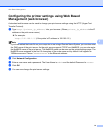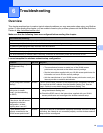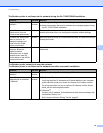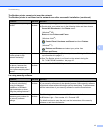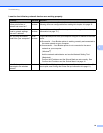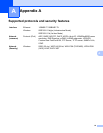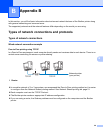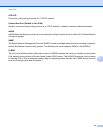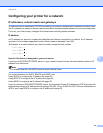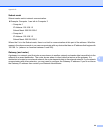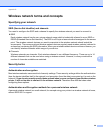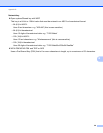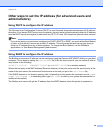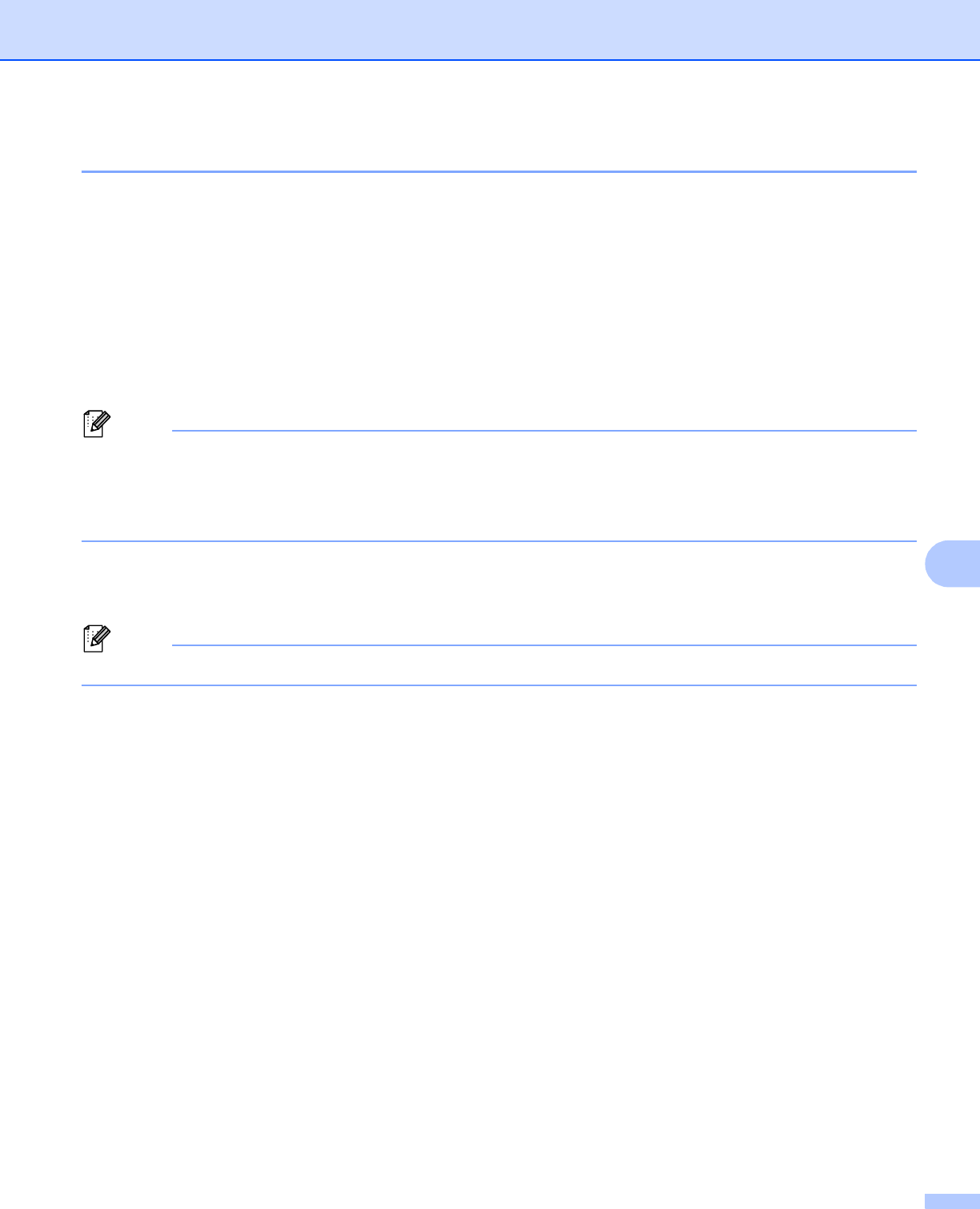
Appendix B
22
B
Protocols B
TCP/IP protocols and functions B
Protocols are the standardized sets of rules for transmitting data on a network. Protocols allow users to gain
access to network connected resources.
The print server used on the Brother printer supports the TCP/IP (Transmission Control Protocol/Internet
Protocol) protocol.
TCP/IP is the most popular set of protocols used for communication such as Internet and E-mail. This protocol
can be used in almost all operating systems such as Windows
®
, Windows Server
®
, Mac OS X and Linux
®
.
The following TCP/IP protocols are available on the Brother printer.
Note
• You can configure the protocol settings by using the HTTP interface (web browser). (See Configuring the
printer settings using Web Based Management (web browser) uu page 14.)
• To find what protocols your Brother printer supports, see Supported protocols and security features
uu page 19.
DHCP/BOOTP/RARP B
By using the DHCP/BOOTP/RARP protocols, the IP address can be automatically configured.
Note
To use the DHCP/BOOTP/RARP protocols, please contact your network administrator.
APIPA B
If you do not assign an IP address manually (using the BRAdmin software) or automatically (using a
DHCP/BOOTP/RARP server), the Automatic Private IP Addressing (APIPA) protocol will automatically
assign an IP address from the range 169.254.1.0 to 169.254.254.255.
ARP
B
Address Resolution Protocol performs mapping of an IP address to a MAC address in a TCP/IP network.
DNS client B
The Brother print server supports the Domain Name System (DNS) client function. This function allows the
print server to communicate with other devices by using its DNS name.
NetBIOS name resolution
B
Network Basic Input/Output System name resolution enables you to obtain the IP address of the other device
using its NetBIOS name during the network connection.
WINS
B
Windows
®
Internet Name Service is a service providing information for NetBIOS name resolution, by
consolidating an IP address and a NetBIOS name that is on the local network.



